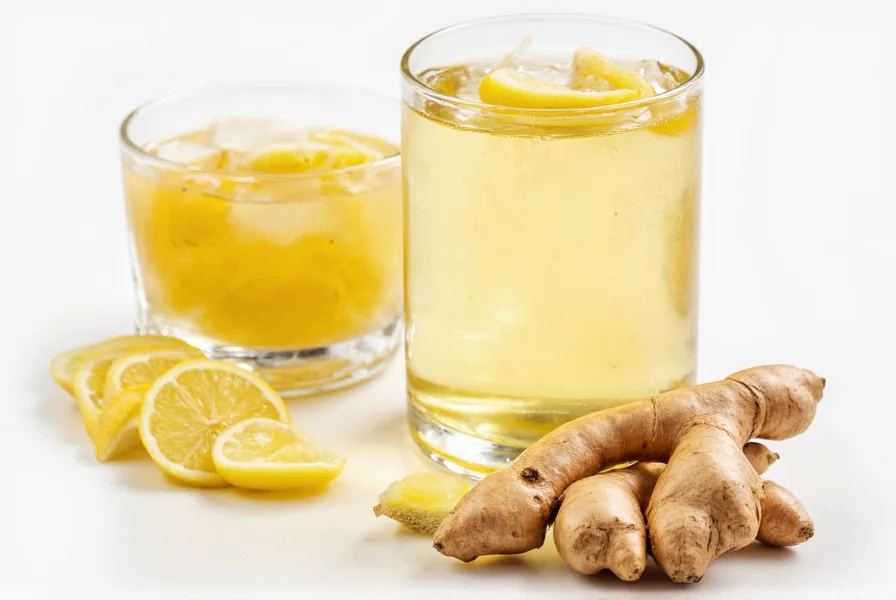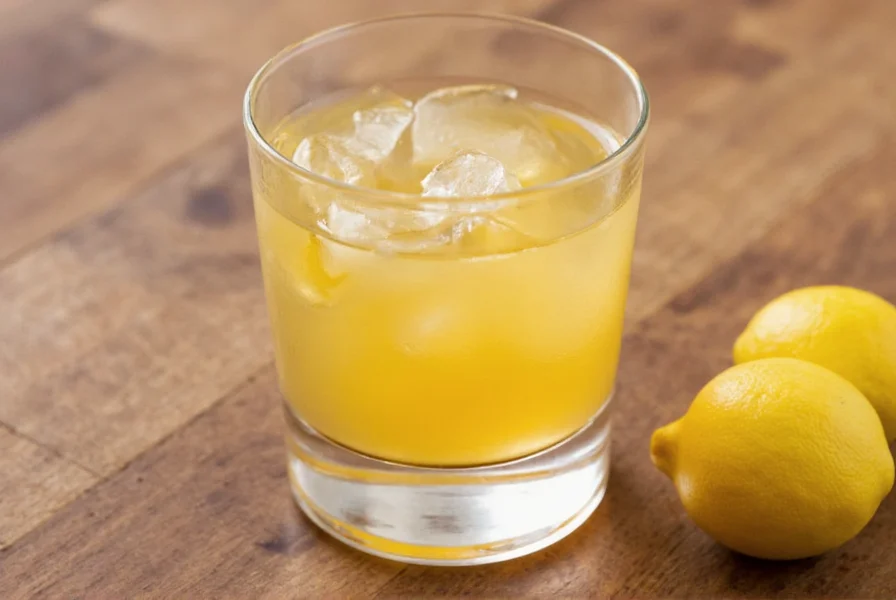Ginger liqueur has evolved from traditional medicinal tinctures to a sophisticated bar staple appreciated by mixologists and home enthusiasts alike. This spirit captures the vibrant heat of fresh ginger while mellowing its sharp edges through the infusion and sweetening process. Unlike ginger beer or ginger ale, which are non-alcoholic carbonated beverages, ginger liqueur typically contains 15-25% alcohol by volume, making it suitable for both sipping neat and mixing in cocktails.
The Art of Ginger Liqueur Production
Creating authentic ginger liqueur begins with selecting high-quality ginger root. The freshest ginger yields the most vibrant flavor profile with optimal pungency. Producers typically peel and slice or grate the ginger before steeping it in a neutral spirit like vodka or grain alcohol. This infusion process can last anywhere from several days to several weeks, depending on the desired intensity.
After the ginger flavor has properly infused the alcohol, producers add a simple syrup made from equal parts sugar and water. The ratio of syrup to infused spirit determines the final sweetness level. Some artisanal producers use honey, maple syrup, or other sweeteners to create distinctive variations. The mixture then undergoes a resting period to allow the flavors to meld before bottling.

Varieties and Flavor Profiles
Ginger liqueurs vary significantly based on production methods and additional ingredients. Understanding these differences helps in selecting the right product for specific applications:
| Type | Alcohol Content | Flavor Characteristics | Best Uses |
|---|---|---|---|
| Traditional Ginger Liqueur | 15-20% | Bright ginger spice with balanced sweetness | Cocktails, dessert sauces |
| Honey-Infused Varieties | 20-25% | Warmer, more complex with honey notes | Digestifs, whiskey cocktails |
| Citrus-Enhanced | 15-18% | Ginger with lemon or orange notes | Summer cocktails, spritzers |
| Spice-Forward Craft | 20-25% | Intense ginger with cinnamon or clove | Winter cocktails, mulled drinks |
Culinary Applications Beyond Cocktails
While many discover ginger liqueur through cocktail recipes, its culinary versatility extends far beyond the bar. Professional chefs and home cooks use this spirit to enhance both sweet and savory dishes. The alcohol content cooks off when heated, leaving behind concentrated ginger flavor without excessive heat.
When incorporating ginger liqueur into cooking, consider these applications:
- Add 1-2 tablespoons to fruit compotes for desserts
- Use as a glaze component for roasted meats, particularly pork or duck
- Enhance baked goods like gingerbread or spice cakes
- Create sophisticated salad dressings with ginger liqueur, olive oil, and vinegar
- Infuse whipped cream for an elegant dessert topping
Classic and Contemporary Cocktail Recipes
Ginger liqueur shines in cocktails where its distinctive flavor can complement other ingredients without overwhelming them. Unlike ginger beer, which provides carbonation and a lighter ginger note, ginger liqueur delivers concentrated flavor with sweetness already incorporated.
Three essential ginger liqueur cocktails every home bartender should know:
- Ginger Mule - Combine 2 oz vodka, 0.5 oz ginger liqueur, and 0.5 oz fresh lime juice in a shaker with ice. Strain into a copper mug filled with ice and top with 2 oz ginger beer. Garnish with lime wedge and candied ginger.
- Golden Reviver - Shake 1.5 oz bourbon, 0.75 oz ginger liqueur, 0.75 oz fresh lemon juice, and 0.25 oz honey syrup with ice. Strain into a chilled coupe glass. Ideal for colder months.
- Tropical Ginger Fizz - Blend 1.5 oz light rum, 0.75 oz ginger liqueur, 1 oz pineapple juice, and 0.5 oz lime juice with ice. Top with soda water and garnish with mint and pineapple wedge.
Serving and Storage Recommendations
Proper storage maintains ginger liqueur's flavor profile and extends its shelf life. Store unopened bottles in a cool, dark place where they'll remain stable for several years. Once opened, keep the bottle tightly sealed in the refrigerator to preserve freshness. Most ginger liqueurs maintain optimal flavor for 1-2 years after opening when properly stored.
For serving, consider these temperature guidelines:
- Neat: Chill in the freezer for 30 minutes before serving in a small snifter or cordial glass
- Cocktails: Keep refrigerated and use chilled for optimal mixing
- Culinary use: Room temperature works best for most cooking applications
Ginger Liqueur in Modern Mixology
Contemporary bartenders increasingly recognize ginger liqueur's potential beyond traditional recipes. Its complex flavor profile bridges the gap between spirit and mixer, offering both alcoholic content and distinctive taste. Many craft cocktail bars now feature house-made ginger liqueurs with unique variations like black ginger, smoked ginger, or ginger with complementary spices.
When experimenting with ginger liqueur in your own cocktail creations, remember that less is often more. Start with smaller amounts (0.25-0.5 oz) and adjust to taste, as the ginger flavor can dominate other ingredients if used excessively. The spirit's natural sweetness also means you may need to reduce other sweet components in your recipes.
Frequently Asked Questions
What's the difference between ginger liqueur and ginger beer?
Ginger liqueur is an alcoholic spirit (typically 15-25% ABV) made by infusing ginger in alcohol with added sugar, while ginger beer is a non-alcoholic, carbonated beverage with a milder ginger flavor. Ginger liqueur provides concentrated ginger flavor with sweetness already incorporated, making it suitable as both a base spirit and flavoring agent, whereas ginger beer primarily serves as a mixer that adds carbonation and lighter ginger notes.
Can I make ginger liqueur at home?
Yes, homemade ginger liqueur is relatively simple to make. Peel and finely chop 1 cup of fresh ginger, steep in 2 cups of vodka for 3-7 days, then strain. Add 1 cup of simple syrup (equal parts sugar and water, heated until dissolved), let rest for another 3-5 days, then bottle. The homemade version allows customization of ginger intensity and sweetness level, and typically keeps for 1-2 years when properly stored in the refrigerator.
What cocktails work best with ginger liqueur?
Ginger liqueur excels in cocktails where its spicy-sweet profile can complement other ingredients without overwhelming them. Classic combinations include the Ginger Mule (with vodka and ginger beer), Golden Reviver (with bourbon and lemon), and Tropical Ginger Fizz (with rum and pineapple). It also works well in whiskey-based cocktails, enhancing the spirit's natural warmth, and can substitute for simple syrup in many recipes to add both sweetness and distinctive flavor.
How long does opened ginger liqueur last?
When stored properly in the refrigerator with the cap tightly sealed, opened ginger liqueur maintains optimal flavor for 1-2 years. The high sugar and alcohol content act as natural preservatives. Signs of deterioration include significant color change, separation that doesn't remix with gentle shaking, or off odors. Unopened bottles stored in a cool, dark place can remain stable for several years beyond the production date.
Can ginger liqueur be used in cooking?
Absolutely. Ginger liqueur adds depth to both sweet and savory dishes. Use it in fruit compotes, dessert sauces, and baked goods for desserts. In savory applications, it enhances glazes for meats like pork or duck, adds complexity to stir-fry sauces, and can elevate salad dressings. When cooking with ginger liqueur, remember that the alcohol content cooks off, leaving concentrated ginger flavor without excessive heat, making it more versatile than fresh ginger in some applications.











 浙公网安备
33010002000092号
浙公网安备
33010002000092号 浙B2-20120091-4
浙B2-20120091-4